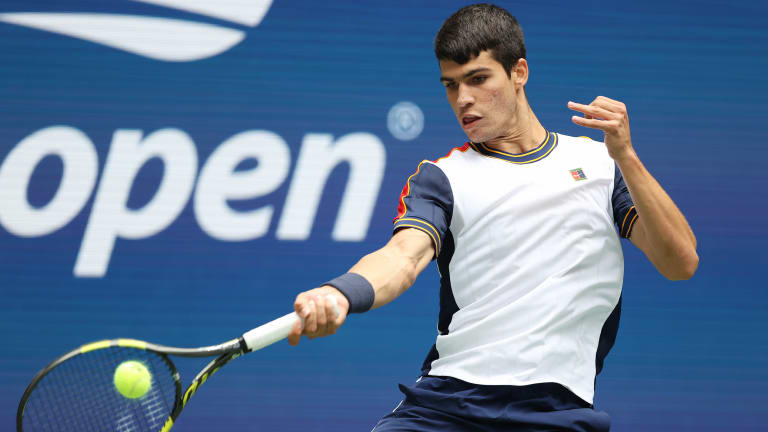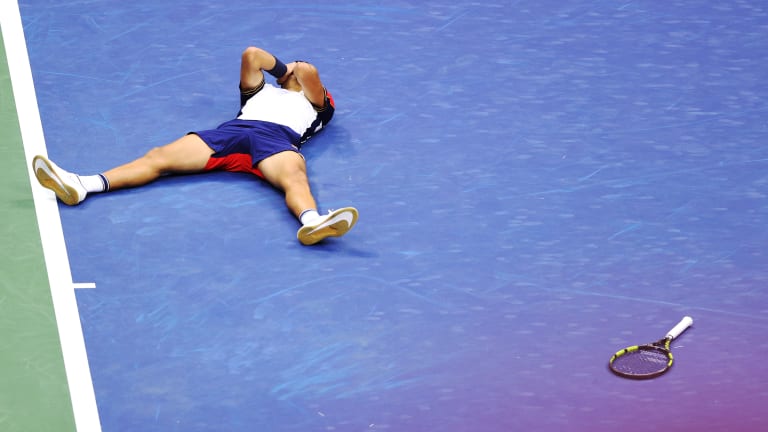There has been a lot of talk about the past at this year’s US Open. About how, with the absence of Roger Federer, Rafael Nadal, Serena Williams and Venus Williams, an era is ending. About how we won’t see stars of their magnitude again anytime soon.
But if you’ve followed tennis long enough, you know that the sport always renews itself, and always creates a new cast of characters for us to care about. Sometimes it takes a while. Other times, it happens in a hurry.
Less than a month ago, the 34-year-old Nadal announced that he was withdrawing from the Open and ending his season. On Friday, Carlos Alcaraz, an 18-year-old from Rafa’s country, announced his arrival on the world stage by putting on the performance of the tournament so far—heck, the performance of the season—in upsetting No. 3 seed Stefanos Tsitsipas in five sets and four hours, 6-3, 4-6, 7-6 (2), 0-6, 7-6 (5).
You could see some similarities between Nadal and Alcaraz today. The mix of calm belief and relentless positivity. The tremendous racquet speed on the forehand. The leaping, celebratory fist-pumps. The flat-on-his-back fall to the court after his final forehand winner found the corner on match point.


